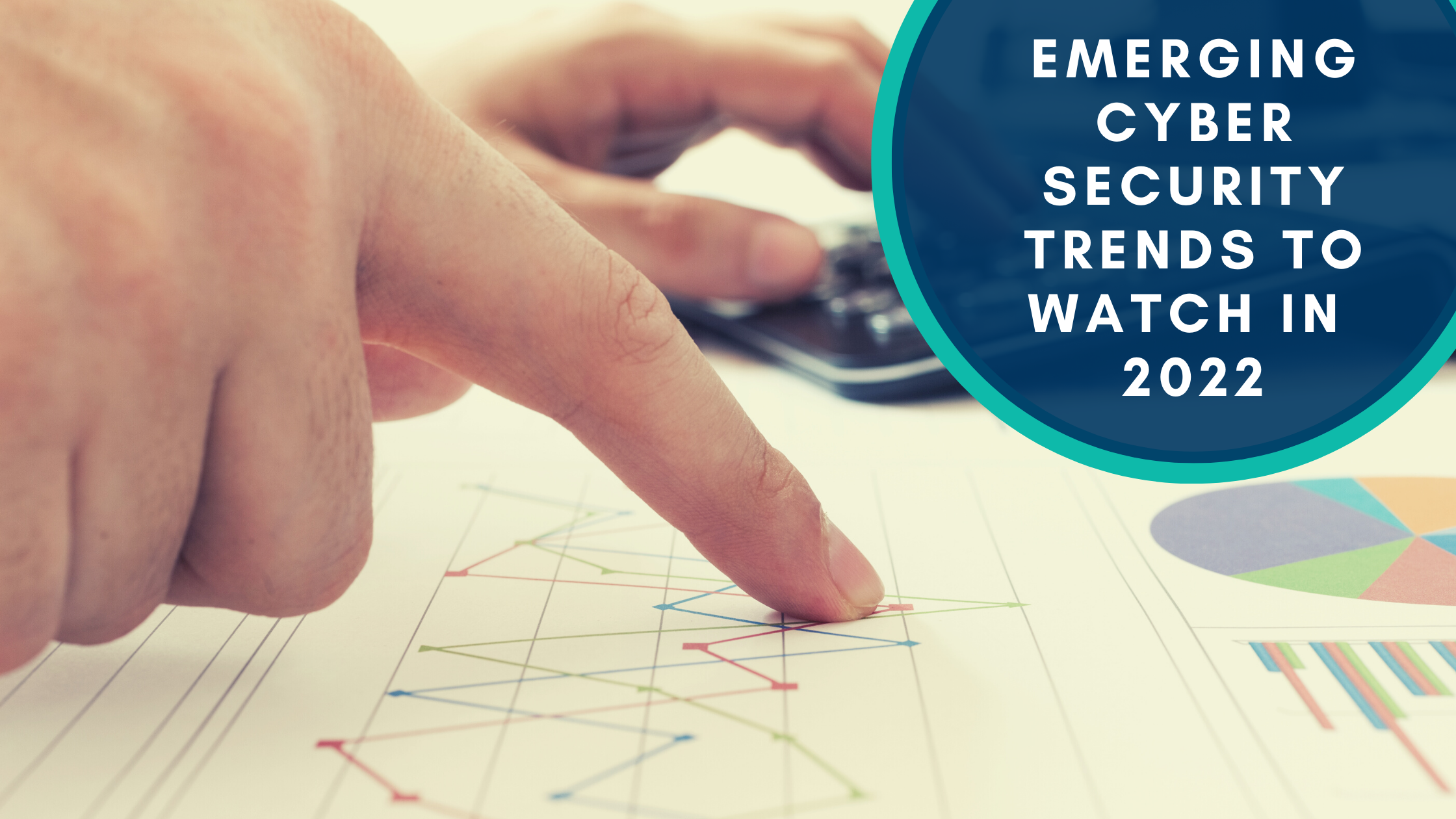In today’s world, cyberattacks are becoming very common. Hackers can expose sensitive information and cyberattacks can have an adverse effect on the normal working and running of any business by shutting it down for hours or even days. The COVID-19 pandemic has changed the way we live and work. Working remotely from the comfort of our homes leaves us exposed to cyberattacks. It is therefore important for everyone to stay up-to-date with the emerging cyber security trends and emerging threats.
Lack of security has caused many businesses to suffer from huge losses. Cyberattacks are the fastest growing crime and it has caused financial losses more than that incurred from the trading of illegal drugs. This has caused fear among both the businesses and individuals. While cyberattacks can cause huge financial losses, they can also damage reputations.
Notable Threats & Emerging Cyber Security Trends
User Awareness
As cybercrimes continue to grow, many organizations and businesses are looking to strengthen their security measures. It is vital to bring awareness among the users so they can identify and protect themselves against any such hacks.
Most people are not even very aware of cyberattacks. This can be changed with classroom-based methods that are already being used by many huge businesses to promote awareness. Employees are trained as to how they can deal with such attacks and what information they are not supposed to share.
Cyberattacks on the Healthcare sector
Failing to deal with cyberattacks in the healthcare sector has exposed many organizations and individuals to different kinds of security and liability issues. Therefore hospitals and other such institutes have started to invest in cyber security. Experts believe that if the healthcare sector fails to effectively deal with data breaches and hacks, they will suffer huge financial losses.
While hospitals have been investing in cyber security, many healthcare organizations relaxed their security measures for the time being because of the COVID-19 outbreak so that the staff could work from home. Moreover, temporary hospitals had also been erected which didn’t consider security diligence protocols and therefore lack the ideal security infrastructure.
Cyberattacks in the healthcare sector are not going to slow down anytime soon, as these figures suggest. Hacks and data breaches present a very serious threat to hospitals as sensitive data about employees, patients and healthcare organizations remains a target of cybercrime.
Phishing Threats
According to a survey, 32% of the data breaches in 2019 involved phishing activities. This makes phishing attacks one of the biggest cyber security threats. Surprisingly, many people still fall victim to phishing emails.
Cybercriminals continue to create professional emails and malicious URLs. However, they used much more advanced methods today, these phishing attacks are consequently highly localized, geo-targeted and personalized.
It is expected that this form of “targeted phishing” will become more prevalent in the near future. Businesses are investing in security awareness programs and incorporating simulators which will recognize emerging phishing patterns and threats.
Cloud Security
More and more businesses are migrating to the cloud because of its management software solutions. However, most cloud services are not very secure. Cybercriminals could hack into the sharing space in the cloud. Therefore, it is expected that we will see an improvement in the security of cloud services.
Cloud databases protect sensitive information that could get into the wrong hands because of poor cyber security. It is essential for cloud service providers to offer a level of security that can combat cyber attackers.
While some businesses are implementing multi-factor authentication to reinforce security, most cloud service providers see Predictive Security Services as the tool that can deal with cyber attackers. Predictive Security Services effectively respond to critical events and help prevent hacks and data breaches.
Machine Learning
When it comes to cyber security, machine learning plays an important part. With the help of machine learning, cyber security can be made much more effective, simpler and even less expensive. Machine learning offers a proactive approach where patterns are developed and then manipulated with algorithms, which helps anticipate and respond to cyber-attacks.
However, machine learning relies on data. The data should come from as many places as possible and represent all possible scenarios so that effective algorithms can be produced. With machine learning, cyber security systems can analyze threat patterns and the behaviors of the attackers. This will help prevent similar attacks in the future.
Mobile Devices as easy targets
You might already be aware that almost everyone uses smart mobile devices. Most leading e-commerce platforms can be accessed through smartphones. However, cybercriminals use mobile devices as attack vectors and use this opportunity to target mobile users.
Cybercriminals know people use their mobile devices for business and personal communications. Moreover, we use mobile devices for shopping, banking, booking flights and hotels. It is worth noting that in 2019 about 70% of fraudulent transactions occurred through mobile platforms.
Cyberattacks on the Finance sector
The finance sector faces cyber threats daily. While banks and financial institutions struggle to keep pace with the increasing number of regulations and cloud migration, cyberattacks remain prevalent in the financial services sector. Moreover, phishing through social media platforms is also a cybersecurity trend in the finance sector.
Malware attacks and data breaches are the most common threats faced by banks, insurance companies, and other financial institutions. It is true that the financial services sector is much more prone to cyber-attacks than any other sector.
IT Security Trends
While it’s important for every individual or a business to have their own security measures, it is also worth noting that cyber security is everyone’s business, and we should all be aware of the cyber security trends as we move into the digital age.
Awareness and training is key. For instance, an employee or an individual who knows about these trends will be able to identify a phishing email. So, to better protect our valuable resources, it’s important to ensure that everyone including the customers, employees and employers are aware of these cyber security trends.
To stay up-to-date we can actively follow the latest news on cyberattacks and how they can be prevented. Remember it’s always better to be safe than sorry.
Takeaways- Cyber Security Trends 2022
While many sectors look to strengthen their networks in the middle of the uncertainties and the chaos of the pandemic, no one can say for sure what the future of cyber security holds. However, these recent trends provide us with insights into what we could expect in the year 2022.
A strong security system is a must-have and not just an option. Think about it, anticipating potential cyber-attacks can help prevent huge losses. What we can say for sure is that security software developers will be busy for years to come.

